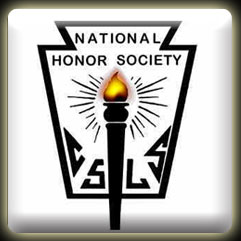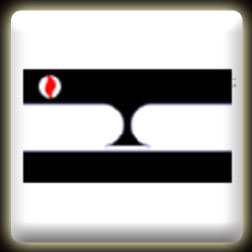The Fountainhead
It is not the works, but the belief which is here decisive and determines
the order of rank -- to employ once more an old religious formula with a
new and deeper meaning -- it is some fundamental certainty which a noble
soul has about itself, something which is not to be sought, is not to be found,
and perhaps, also, is not to be lost. The noble soul has reverence for itself
- Friedrich Nietzsche, Beyond Good and Evil
The Fountainhead is Ayn Rand’s first major novel. This book, the cornerstone of Rand’s philosophical monument, details all of the methodology and reasoning behind Rand’s ideology. The novel is the story of Howard Roark, an individualist and an egoist, and his fight against Ellsworth Munkton Toohey, the socially accepted equalizer. These two, along with all of the other characters in the novel, represent radically different doctrines. A few, such as Howard Roark and Henry Cameron, are similar in their beliefs, but no two are completely identical. The most startling feature of these characters is the fact that none but a few of them can be considered dynamic. Almost every character retains their original beliefs, holds on to their own unique ideologies, and maintains their positions on either side of the war that has broken out between the two major forces of this novel, Roark and Toohey. This fact, along with the characters themselves, symbolize Rand’s message that people need to be themselves, and to reject any outside influence that might contaminate their personality.
Howard Roark, the main protagonist, is the quintessential embodiment of Rand’s ideal figure. The novel begins with Roark standing naked at the top of a cliff, immediately implying his purity via nudity, and his natural dominance over society via height. These themes are continued through the remainder of the novel, with Roark only taking offices on the top floors of skyscrapers, refusing work incompatible with his style (to the point of taking a job at a granite quarry rather than design a house he didn’t like), rejecting all societal constraints and directions that could influence him in any way, and even, at the climax of the novel, dynamiting a building he designed himself, because others contaminated it with their own input. Many sources discuss the fact that “Roark needs no approval, acclaim, or admiration: whether he is liked is immaterial to him” (Deane par. 16). Rand explains that is the exact opposite of “the man who crushes his own ‘I’ to succeed with others” (Journals of Ayn Rand 93). Roark’s knowledge of himself, and the reader’s knowledge of him, confirms the three main positive attributes displayed in the novel; individualism, egoism, and reason. These three forces directly counter the three negative attributes displayed by the antagonists; collectivism, altruism, and mysticism (Gladstein 25). Roark is outlined at the onset of the novel, and this description of him holds true through the rest of the narrative. Wendy Perkins puts it simply, saying that “Rand rejects this traditional form of character development by presenting a hero who at the beginning of the novel is fully realized.” (par. 3). This consistency and monotonic methodology in all matters of his life provides Roark with a sense of predictability, and allows the reader to better know him as a person as well as a fictional character.
Roark’s inspiration came directly from the architect Frank Lloyd Wright (Peary and Shatzkin 326). Wright was degraded, scorned, and ostracized from the architectural society many times due to his unconventional and original building designs. This applies directly to Roark who, like Wright, loses many offers for contracts due to his aberrant designs. Rand is able to take this idea and give it an entirely new meaning however, by making all of the people that reject Roark part of a community group, board of directors, or other collaborative entity. Roark even admonishes himself, “No board has ever hired me -- and I don’t think one ever will.” (Rand, The Fountainhead). This, along with Roark’s character, indicates that Roark idealizes the individual, not the collective.
Peter Keating is the antithesis of Howard Roark. He never directly conflicts with Roark, be it in philosophical, moral, or architectural matters, but he also never conflicts with anything at all. Keating is the embodiment of the shell of a man, the “second-hander” as Rand so often calls them (Rand, The Journals of Ayn Rand 91). Throughout the novel, from their college days together, to their final project Cortlandt Homes, Keating is constantly relying on Roark for guidance, direction, purpose, and occasionally building designs. Keating’s condition is described in greatest detail in chapter 14 of part 4. In this section Ellsworth Toohey confronts Keating about Cortlandt homes, and Keating is helpless before the utter and complete dominance of Toohey. While Toohey describes in great and lengthy detail his plans for social domination, Keating can do nothing except flounder under the immense weight of Toohey’s speech (Rand, The Fountainhead). Keating’s character always exudes an air of malleability, as if Keating can be shaped and moulded by anyone who cares to influence him. At the onset of the novel, Keating can’t decide between working for Guy Francon, and going to École des Beaux-Arts in Paris. Keating never personally makes the decision to go to work at Francon & Heyer, it is made for him by Roark and by Keating’s Mother, showing Keating’s inability to chose for himself what he wants to do with his life. The eventual outcome of Keating, the depressed and lonely figure he becomes, conveys Rand’s meaning for Keating, that his character traits are inferior to those of Roark, and the ideal man knows who he is and is unwilling to become a shell for other’s emotions.
Rand’s comments on Keating deal mainly with his contrasts to Roark. One of her most telling quotes about Keating is the phrase “Those who actually exist only in the eyes of others, not in their own.” (Rand, The Journals of Ayn Rand). Keating fits this description perfectly. Near the end of the novel, it becomes blatantly apparent that Keating does not exist as a person, merely as a projection of other people’s wills and desires and hopes and advice and directions and feelings and dreams and ideas and of their constant pressure to do the will of the mob and the edict of the masses.
Dominique Francon is one of the more interesting characters in The Fountainhead, not least because of her gender. Ayn Rand knew of her own plain figure, and did not mind. It is mentioned many times that “None of her friends ever reported seeing envy in Ayn toward anyone; she wanted to see success and happiness and beauty in others” (Branden 137). The main outcome of this fact is that every book written by Ayn Rand includes at least one exceedingly beautiful and powerful woman, completely out of proportion with the remainder of the characters (Gladstein 28). Dominique is the striking, strong, feminine character that is the goal and desire of every male character in the novel. Her life is characterized by sudden, intense moments of action or reaction, and calm placidity the remainder of the time. Her first physical encounter with Roark, who goes on to become her husband at the conclusion of the novel, is that of rape. There are no initial pleasantries, no first dates, Roark breaks into Dominique’s house and rapes her (Rand, The Fountainhead). This again is a representation of the power of the individual. Rape is considered evil by society, but Dominique’s acceptance of Roark’s actions show Rand’s leniency toward the subject, not rape, but an individual’s ability to overcome stereotypes and rules set down by the masses. In all of her books, Rand includes at least one overly extravagant gesture to help prove her point (Gladstein 29). In this novel, Dominique buys a statue of Helios for its beauty, and then throws it down an elevator shaft, so that no-one unworthy could ever see that kind of beauty. Her personality is incredibly similar to Roark’s, deeming individual worth above the machinations of the masses, except for the fact that Dominique acts as though she has given up on the world. While Roark is building and working to achieve his goal of an individual that can overpower the throng, Dominique is torturing herself because she believes that the world has already been lost to the collective. Dominique is unable to gain any of the peace or comfort of Roark due to this mindset, and is never able to change her views to cope with Roark’s presence in her life.
Ellsworth Munkton Toohey is the prime antagonist in this novel. Toohey is not just a member of the collective, he is the collective. Toohey is the one that tells people what to think, what to like, what to want, and what they need. In chapter six of part three, Toohey says that “to write a good play and have it praised is nothing. . . to write a piece of crap and have it praised -- well, you match that” (Rand, The Fountainhead). Toohey constantly tries to pass mediocrity off as genius, and he reasons by saying “do not seek to raze the shrines, people will become frightened. Enshrine mediocrity, and the shrines will be razed” (Rand, The Fountainhead). Toohey promotes religion, because religion makes everyone feel small. He criticizes the Stoddard Temple because it praises mankind, while a true temple should praise God and make man look weak before him. Toohey even sees himself as a god, and wants others to grovel to him, not to themselves. Power and prestige are Toohey’s main goals. These are accomplished in two ways; bringing up the mediocre as explained previously, and bringing down the true geniuses that pose a threat to Toohey’s strength. Roark is one of these. This idea is shown primarily through Toohey’s neurosis (Deane par. 7). Neurosis because Toohey is unwilling to submit to anyone, be it Wynand trying to fire him off of The Banner, or Johnny Stokes, who “was a bright kid with dimples and golden curls: people always turned to look at Johnny Stokes. Nobody had ever turned to look at Ellsworth Toohey” (Rand, The Fountainhead). This vicious characteristic turns Toohey into the quintessential liberal demon, attempting to gain power over everyone by making everyone believe that they need to be ruled by him.
Toohey’s inspiration came from many sources contemporary to Rand’s creation of the novel. Harold Laski, a prominent British socialist, was the initial source of inspiration. Rand writes that “Laski was the soul of Ellsworth Toohey in the flesh. After seeing Laski, I just had to remember how he lectured -- his mannerisms, the pseudo-intellectual snideness, the whole manner of speaking on important subjects with inappropriate sarcasm as his only weapon” (Journals of Ayn Rand 113). Other sources provided inspiration for this character including C.H. Whitaker, Le Corbusier, and David Gray, all of which are architecture critics who praise the older styles, or consider themselves to be the only true patron of architecture, and everyone else should also carry their views. This contrasts directly with Roark’s thinking, where even though Roark knows how he wants to build and designs everything for himself, he still retains some sense of respect for other people’s work, and never tries to force his opinion on others.
Henry Cameron, Roark’s mentor and inspiration, is another character that retains his views and opinions despite the influence of others. Cameron was a great architect many years before the start of this novel. After his peak, Cameron is unable to “adapt” to changing conditions in architecture and is reduced to a man who cannot even afford to pay the electric bill on his office, forcing Cameron and Roark to work together by candlelight on projects that are barely holding the business out of bankruptcy. Cameron was influenced by Louis Sullivan, a prominent architect who had the same run of luck, a short fruitful career that ended with Sullivan in desperate circumstances (Peary and Shatzkin 327). Cameron was also able to, like Sullivan, spearhead a new modernistic movement in architecture. Cameron’s main purpose at the onset of the novel is to act as foreshadowing for Roark’s career. While Keating goes off to work for Francon, a fake who never does work for himself, Roark takes a job with Cameron, who is the paragon of individualism and self worth (Rand, The Fountainhead).
Only one character makes a radical change in this novel, but a few make smaller, less corporeal changes. Guy Francon, Keating’s employer, is one such character. Early on, Francon is little more than Keating is, empty, without persona or individuality. At this point Francon is seen as an altruistic figure, willing to give of himself for “good and just causes” (Rand, The Fountainhead). Altruism throughout the novel is seen as a negative trait, for altruism is serving others. In the words of Toohey, “Where there’s service, there’s someone being served. The man who speaks to you of sacrifice, speaks of slaves and masters. And he intends to be the master” (Rand, The Fountainhead). Unfortunately, the reader is not privy to the exact moment of Francon’s transition, due to Francon’s retirement and disappearance from the novel. All the reader is able to know, is that at the Cortlandt trial, Francon reappears on Roark’s side, even after he had been the one to fire Roark from Francon & Heyer in the first place. This transition is Rand’s way of telling the reader that anyone can reverse their actions, no matter the initial state of their life.
Roark eventually befriends a man by the name of Gail Wynand, another character who almost changes, but can’t quite complete the transition. Wynand is the ruler of a vast media empire, intent on ruling the entire nation with his will and word. Wynand’s main newspaper, The New York Banner, is the embodiment of public opinion. Everything in The Banner is focused toward the masses, and providing them with what they should think. Toohey is initially employed by the banner as a columnist. Toohey’s mere presence displays The Banner’s initial position in the novel. While it may be that Wynand is not the most sympathetic character, he does end up being the only tragic hopeful of the novel (Perkins par. 2). Wynand has the drive and the ability to pull himself up from the gutter, and the knowledge and appreciation of art when it is showed to him in the form of Roark’s buildings, but he still cannot escape the life of the second-hander. He pulled himself to fame by pandering to other’s opinions in his papers. He built his empire on the backs of other men, and this condemns him to loss and inability to see his true potential. For the brief time that Wynand and Roark are friends, Wynand tries to throw off this weight of collectivism. Immediately his business begins to crumble, and he is reduced to the point of submission to the masses in order to save his paper. Although Wynand does make a few changes to his person and actions because of Roark, he is unable to maintain those changes for any length of time, rendering him consistent with his initial personality.
Catherine Halsey is the only true dynamic character in the novel. Unfortunately for her, Rand does not look favorably upon those who reject their personal opinions for those of others. To start off the novel, Catherine is in a relationship with Keating. The two of them are happy together, wanting nothing but each other’s company, and the knowledge that they are devoted to each other. This is unfortunately cut short when Keating meats Dominique, and Catherine falls out of the story (Rand, The Fountainhead). Catherine is the niece of Ellsworth Toohey, and cares for him almost as a father. When Catherine initially moves in with Toohey after she loses her own home, she is afraid of Toohey. Slowly she begins to lose that fear, and herself in the process. By the end of the novel Catherine is completely absorbed in Toohey’s ideology, subservient to the masses, a teacher at a school for the underprivileged, completely uninterested in Keating (who by that point had realized his errors), and the representative of society’s “perfect social worker” (Deane par. 15). Catherine is seen by many as the antithesis of Dominique. While Dominique is strong, individualistic, and the only powerful feminine figure in the novel, Catherine is meek, timid, and easily controlled by Toohey and others (Deane par. 15). Catherine’s dynamic personality and her tragic fate symbolize Rand’s opinions of what happens to both those who lose their individuality, and those who fall victim to socialists, and collectivists like Toohey.
Rand’s philosophy in this novel was inspired by many popular principles contemporary to her authorship of The Fountainhead. Marx’s work in The Communist Manifesto and Das Kapital is the obverse of Rand’s The Fountainhead. Marx’s ideas of communism and social equality never held any sway with Rand. Many other western intellectuals during this period felt a connection with communism, some even praising it and earning them Lenin’s nickname, “useful idiots.” Rand is one of the few philosophical writers who maintained capitalism in the face of socialist ideology, from a purely moral and ideological standpoint. Many others defended capitalism as well, but their reasoning was all economic and wealth oriented; Rand was the only one to hold her position based on ethics and other incorporeal features (Machan 106). Her main defenses against this ideology were her ideas of egoism. In this ideology, man and his ego is the prime moving force in society. She rejected one of the more popular theories of the day, mind-body dualism, in favor of an ideology where the two are co-existant and of the same entity (Machan 12). One of her other defenses against communism is that “capitalism gave mankind the longest period of peace in history” (DenUyl 5). All of this plays into her development of The Fountainhead. In her Journals, Rand even writes that “The first purpose of this book is a defense of egoism in its real meaning” (77). As with all philosophies however, hers has its own collection of critics. Some have expounded that Rand’s philosophy “has a Nietzschean (indeed borderline Nazi) contempt for human frailty and a total lack of sympathy for the underdog” (Delingpole par. 8). This novel is the first of Rand’s to so cohesively collect all of her ideology into one tome.
Ayn Rand wasn’t a novelist. Her intentions in this book were never to make money or please other people with her words. Ayn Rand was living out her own philosophy and creating a work of unrivaled philosophical merit. That is the reason that this novel has endured. No mater the critics who say that Rand cannot create a character, or say that she “really is a lousy novelist” (Delingpole par. 9), Rand wrote this novel for the philosophy. Rand wrote her entire collective body of works so that her philosophy could be spread to the people who needed her help the most, those who have lost their own personal identities to the whims and wills of the masses.



